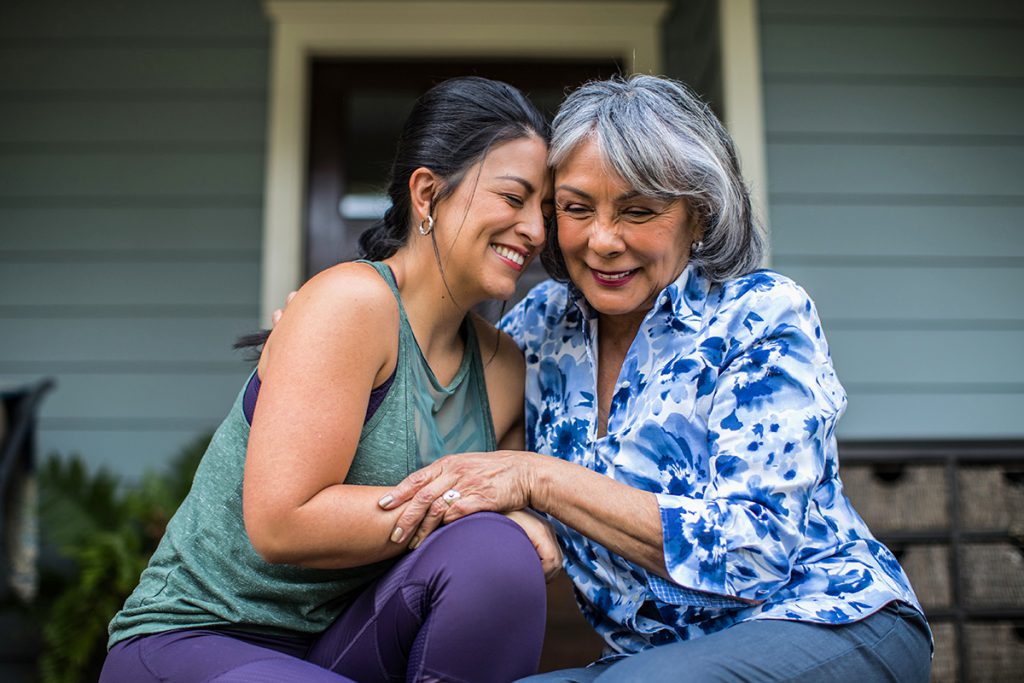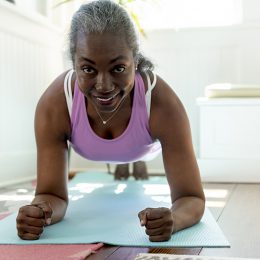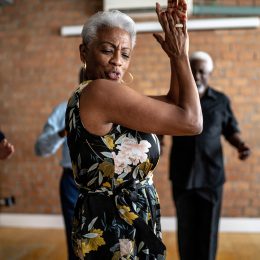5 Myths About Loneliness, Debunked
Can loneliness ever be a good thing? What’s the best fix? Here, experts clear up the confusion around common misconceptions.

Everyone feels lonely sometimes. Big milestones like moving to a new town, ending a career, or losing a friend or loved one can leave anyone with a sense that something is missing—a comfort they once knew is no longer there. That’s normal, and it’s a healthy human response.
“Social connectedness is a basic human need,” says Sabine Schmid, Ph.D., an assistant professor of psychiatry and behavioral sciences at the University of Minnesota Medical School. “Feeling lonely is a signal our body sends to tell us to connect with other people, which is essential for coping with distress and overall well-being.”
So, is fixing loneliness as simple as spending more time with people? Not exactly. But that’s one of many misconceptions that persist around this complex human emotion. Here, experts explain the truth behind five of the most common loneliness myths.
Emotional well-being and fitness go together! SilverSneakers classes and events are happening right now at participating gyms, online through SilverSneakers LIVE, and at community centers near you. Activate your free online account to get started
Myth #1: Loneliness Is the Same as Being Alone
Loneliness and being alone, or social isolation, are often used interchangeably, but they’re not the same thing. Social isolation is an objective state of being alone, unable to connect with other people. This may be due to geography, a lack of transportation, chronic illness, poor access to technology, or some circumstance outside of your control, like a global pandemic.
Loneliness, on the other hand, refers to the subjective feeling of being disconnected. That means you might be surrounded by people, yet still feel lonely because you don’t feel a meaningful connection to them, Schmid explains.
Science backs this up. According to a study in JAMA Internal Medicine, 43 percent of American adults over 60 experience loneliness. And of those who reported feeling lonely, nearly 63 percent were married or partnered.
People don’t just want superficial interactions, but they want to feel like someone knows them well, shares their interests, and understands them. That’s why when it comes to social ties, quality is more important than quantity. Try these strategies to build stronger, more meaningful relationships.
Myth #2: The Best Fix for Loneliness Is to Spend More Time with People
Wouldn’t it be nice if it were truly that simple? The reality is that there’s not one quick fix for loneliness. That’s why Schmid recommends trying a few different things to see what helps you feel more connected. For example, you might:
- Find a group exercise class to form new connections around a shared interest. For example, SilverSneakers offers classes both in person and online, and one reason members love SilverSneakers classes is because of the sense of community.
- Ask your children to text you a picture of your grandkids each day to help you feel more connected to their lives, especially if you can’t spend time with them in person.
- Make a commitment to call two different people each week to catch up.
- Write letters or mail small gifts to loved ones.
- Use websites like stitch.net or meetup.com to find local communities and virtual or in-person events where you can talk to people with similar hobbies.
Beyond what’s listed above, Schmid also suggests an overall mindset shift: Focus on what you can control, not on the things you can’t. Taking any step toward change—even something as small as texting an old friend to say you’re thinking of them—can help you feel empowered to improve your situation and feel more connected again.
Myth #3: There’s Nothing Good About Loneliness
Feeling lonely is your brain’s way of telling you that you’re not getting something you need—you’re due for some human connection, Schmid says. So if it prompts you to prioritize getting the support you need, that’s certainly a good thing.
This is especially true if you’ve recently lost a friend or loved one. “That’s a time when social connection is incredibly helpful,” Schmid says. “Because we don’t grieve very well on our own.”
It’s absolutely normal and healthy to feel lonely after a loss, and the timeline is different for everyone. The key is to acknowledge what you’re feeling. When you ignore the emotion or feel helpless—like there’s nothing you can do to shake the loneliness or that it’s not even worth trying—that’s when it can continue for longer than it should. And risks of that are real: It can potentially increase your risk of depression, anxiety, and even heart disease.
Try these strategies to cope with grief. And if prolonged or severe grief affects your sleep, appetite, or other aspects of daily living, know that you are not alone. Start by talking to your doctor, who can guide you to other support if needed.
Myth #4: If Your Friend Is Lonely, They’ll Make an Effort to Connect
It may sound counterintuitive, but many people avoid social contact when they’re lonely. That’s because feeling lonely and isolated can be accompanied by problematic thinking patterns that lead people to assume no one cares about or understands them, Schmid says. They may even feel helpless.
“Those are problematic beliefs, and they often lead people to avoid some of the triggers that can make them feel even more lonely,” she says. “For example, social activities may be a trigger that reminds them how left out and alone they feel. They also may not respond to phone calls or texts if they think people don’t understand them anyway.”
This perpetuates a hard-to-break cycle: Avoiding social interaction leads to feeling even more isolated and reinforces negative thinking patterns, making it harder and harder to get the genuine connection they crave.
Subscribe to our newsletter
It's quick and easy. You could be one of the 13 million people who are eligible.
Already a member? Click to discover our 15,000+ participating locations.
Follow Us
If you suspect this is happening to someone you know, don’t take it personally. Keep reaching out. Try a quick text message: “Hi, I was just thinking of you. How are you doing?” or “Hey, I haven’t heard from you in a while so just wanted you to know I’m always here.” Sometimes that’s all it takes to let them know you care.
Myth #5: Technology Is an Easy Antidote for Loneliness
Technology can be a helpful connection tool for some people. But for others, it can be a barrier.
“Young people are more likely to use technology, and we’re all communicating more over technology as a society,” says William D. “Scott” Killgore, Ph.D., professor of psychiatry and psychology at the University of Arizona College of Medicine. “If you’re not texting, Zooming, or using all kinds of social media, it can be hard to feel like you’re plugged in and able to keep up, especially if your kids and grandkids are accustomed to communicating in those ways.”
This doesn’t mean technology isn’t worth trying—it can be very helpful for staying in touch. It just may come with a learning curve and require patience at first. That’s normal, and we’ve got your back with these tips for mastering Zoom events.
One caveat: Be careful about how you use technology. Mindlessly scrolling social feeds is not the equivalent of a one-on-one video call with your favorite niece, and the former can make you feel more lonely and disconnected.
Activate Your FREE SilverSneakers Online Account
Get hundreds of free SilverSneakers On-Demand videos and stay in touch with us by creating your free online account. You don’t have to be a SilverSneakers member to get on-demand workout videos, health and fitness tips from SilverSneakers, and more.
SilverSneakers members can go to thousands of nationwide gyms and fitness locations, plus take SilverSneakers LIVE online classes led by specially trained instructors and designed for all fitness levels and abilities – at no additional cost. If you have a Medicare Advantage plan, it may include SilverSneakers. Check your eligibility here.
Already a member? Get your SilverSneakers member ID, search for locations near you, and all the health and wellness resources you need by logging in to your online member account here.




